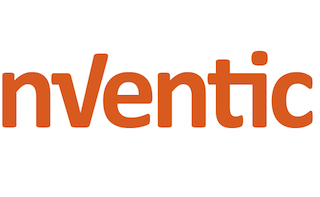
Strategic supply chain redesign
Our client, a major European industrial company, wanted to reconfigure its network to minimize its carbon footprint and optimize costs. It engaged nVentic to help it identify the best strategic alternative and develop an investment proposal to support it.
Context
Our client was winning market share in a steadily declining market which had over-capacity. They wanted to rationalize their operations: minimizing their carbon footprint while maintaining safety and quality.
A shortlist of plausible scenarios had been identified, but an internal analysis had shown no clear optimum target network.
The scope of the project encompassed multiple business units and geographies.
nVentic was engaged to:
Our client was winning market share in a steadily declining market which had over-capacity. They wanted to rationalize their operations: minimizing their carbon footprint while maintaining safety and quality.
A shortlist of plausible scenarios had been identified, but an internal analysis had shown no clear optimum target network.
The scope of the project encompassed multiple business units and geographies.
nVentic was engaged to:
- Focus on the pre-identified scenarios and their main variants
- Develop a fact-based and quantitative framework to identify a preferred solution acceptable to all
- Produce an investment proposal for the board, including a thorough cost/benefit analysis
- Draft an implementation roadmap
Approach
nVentic started by defining the main variants, including both the distribution as well as the production network.
We then listed the relevant criteria and constraints for the different options, which included:
nVentic started by defining the main variants, including both the distribution as well as the production network.
We then listed the relevant criteria and constraints for the different options, which included:
- All regulatory and health and safety considerations
- Flexibility and resilience to disruption
- Facility sizes, capacity and potential for expansion
- Labour issues, including cost, productivity and union relations
- Age of plant and equipment
- Freight requirements and cost
- Ownership of sites and resale value
- Social costs of closure
Data was collected and processed to facilitate side-by-side comparison of each option.
Once a prefered scenario was identified, nVentic developed an investment proposal, including:
Once a prefered scenario was identified, nVentic developed an investment proposal, including:
- The amount of the investment
- Internal rate of return
- Net present value
- Sensitivity analysis
- Risk analysis
Finally, a high-level implementation plan was developed.
Results
nVentic’s analysis showed a clear optimum solution with which our client’s management team agreed across sites as well as at headquarters.
It was decided to consolidate production sites but open additional distribution sites to maintain customer lead times.
The favoured solution involved a slight increase in transport, although more opportunities to use non-road transport modes. There were also economies of scale in production, making production significantly more energy efficient.
Furthermore, the preferred option presented more flexibility to expand and vary operations.
Cash flows were modelled for all sites in scope as well as for the group as a whole.
The financial comparison and business case were very sensitive to future operational costs, both one off and recurring, and these were examined in some detail.
A two-year implementation plan was developed, agreed and subsequently implemented.
Results
nVentic’s analysis showed a clear optimum solution with which our client’s management team agreed across sites as well as at headquarters.
It was decided to consolidate production sites but open additional distribution sites to maintain customer lead times.
The favoured solution involved a slight increase in transport, although more opportunities to use non-road transport modes. There were also economies of scale in production, making production significantly more energy efficient.
Furthermore, the preferred option presented more flexibility to expand and vary operations.
Cash flows were modelled for all sites in scope as well as for the group as a whole.
The financial comparison and business case were very sensitive to future operational costs, both one off and recurring, and these were examined in some detail.
A two-year implementation plan was developed, agreed and subsequently implemented.
Would you like to talk to one of our experts? Contact us

